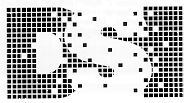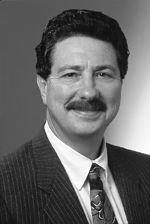 |
Click for Dennis & Schwab Sponsor Message |
| May 1999
Sterling takes over more HP computing reins 3000
General Manager adds technical software, data warehousing duties to new,
expanded group Sterling became general manager of the new group as part of the April reorganization of HP, moves that created four new CEOs across the major groups in the computing and imaging businesses of HP. Sterling is keeping his 3000 general manager’s hat and adding GM responsibility for HP Unix technical software solutions and the business intelligence products from HP, known as data warehousing solutions.
Now that his division has established a growth record for the HP 3000 through close customer contact, Sterling is being given the task of making those values work to satisfy HP’s technical software customers and those installing data warehouses. “On the 3000 side it would be equivalent of the ISVs, managing the channel,” he said. “There’s a number of technical solutions, and I’m still drinking from a firehose in learning about all those.” HP’s new reorganization model is focused on the value chain, Sterling explained. That means that HP “looks across the organization to establish some key business areas, where we’ve assigned responsibility for those areas. One is around e-commerce and e-services. They’ve asked me to manage the business intelligence part in addition to managing the CSY division.” Sterling got the call not because the 3000 group deserves less of his direct attention, but because its revival in a mature, profitable market is an achievement HP would like to duplicate. “A lot of the things that we’ve done in CSY over the years in terms of taking responsibility for the whole value chain are things that could potentially be leveraged into these other two solutions on the Unix platform,” he said. Sterling’s new responsibility for the technical server
solutions include Computer Aided Design and development tools for the
technical marketplace. In exchange he will be handing over the reins of the
new Open Skies operation to HP’s Frank Barker, moving from Geneva. The
transition should take place sometime this month, he added. HP likes to use the term “across the value chain” to describe its new business mission, meaning it will mingle platforms and technologies to service vertical markets. It’s evidence that the separate businesses in HP are beginning to work together when a product line general manager starts crossing these lines with management responsibilities. “We work with many different verticals, like telecomm, for example, to deploy those solutions,” Sterling said. “We’re responsible for driving those solutions across the value chain.” The Business and Technical Solutions Division is “making sure we have the support partners on board, making sure we have people trained to install data warehousing solutions. The third piece is for the technical server solutions.” Sterling’s new, expanded division is part of a new Business Critical Computing unit, headed by former HP 9000 General Manager Janice Chaffin. At one glance the reorganization pushed Sterling down a level on the HP corporate org chart. But the making of four businesses separate enough to have their own CEOs shows the true intent of the reorg. HP is splitting its computer business across inkjet, LaserJet, PC product and enterprise computer solutions. Sterling’s post reports to Chaffin, who reports to the CEO of the Enterprise Computing Solutions Ann Livermore. These CEOs have as much autonomy in their new organizations as HP CEO Lew Platt had while he was president of HP. Platt gave up the president’s title, but remains HP CEO until HP’s search for his successor is completed. For Sterling, the shift makes the HP 3000 an obvious partner with the most advanced systems R&D that HP is offering. “I think there will be a lot of leverage for the 3000,” he said. “We’re working much closer with Janice’s organization on the Unix side. I’ve already seen that we’re going to get a lot more leverage on the outbound messaging. Janice is now responsible for all HP servers, including the NetServers [sold] into the commercial space. We’re going to have a very cohesive message as a result of this change.” A big HP internal sales meeting in April included a company-wide presentation from the 3000 group. “We were approached to do this,” Sterling said. “We didn’t have to ask for it. There’s going to be some subtle changes, and I think you’re going to see it in the messaging, because we’re going to be working together.” As a general manager now reaching across more than just the HP 3000 operations, Sterling expects to get the system included in more technologies. “One of the struggles we had in the past was attending the R&D meetings that Unix effectively drives for some of their platforms, and really not being completely included in those things,” Sterling said. “Those things will happen naturally because of the way we’re structured. This should cut down on the complexity of the internal communications in the past. There will be a lot more synergy between the marketing organizations, and with R&D as well.” The extra duties will put Sterling’s 3000 time at a premium, but he expressed confidence in his divisional managers. “I have a very strong team,” he said. “I’m very pleased with the results of our R&D programs. I’m by no means abandoning the 3000. I’m still very engaged and very involved.” |
Copyright The 3000 NewsWire. All rights reserved.

 “I have two sets of
business cards,” Sterling said a week after the reorg, speaking as the
new General Manager of the Business and Technical Solutions Division.
Although his new duties involve the newest N-Class servers using the
PA-8500 processors on the Unix line, Sterling said, “I just have
responsibility for the solution piece, which are the
applications.”
“I have two sets of
business cards,” Sterling said a week after the reorg, speaking as the
new General Manager of the Business and Technical Solutions Division.
Although his new duties involve the newest N-Class servers using the
PA-8500 processors on the Unix line, Sterling said, “I just have
responsibility for the solution piece, which are the
applications.”